Rescuers have worked through the night to reach dozens of people believed to be trapped under a collapsed flyover in the Indian city of Kolkata (Calcutta).
The bypass was under construction in the Girish Park area when it collapsed suddenly on Thursday night.
At least 23 people were killed and scores were injured.
The 2km-long (1.2 mile) flyover had been under construction since 2009 and missed several deadlines for completion.

A section of the structure about 100m long fell suddenly on to traffic
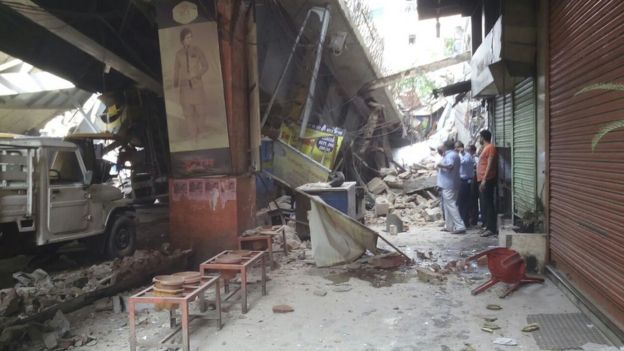
Reports suggested families were living under the construction site
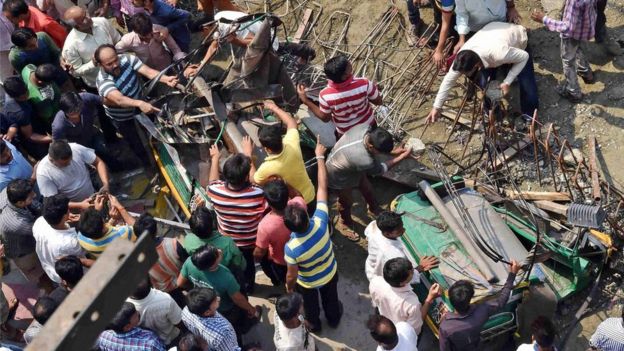
Volunteers initially used bare hands to try to reach people trapped under the rubble
Officials said more than 90 people have been rescued, some of whom where in hospital in a critical condition.
“Many of the people rescued have been seriously injured,” police chief Ajay Tyagi told the Reuters news agency.
“Many could still be buried below the debris.”
The BBC’s Justin Rowlatt in Kolkata says much of the rubble has been cleared.
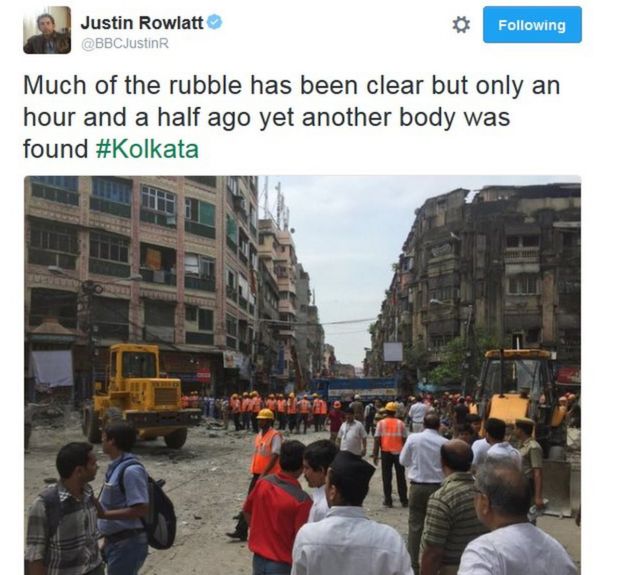
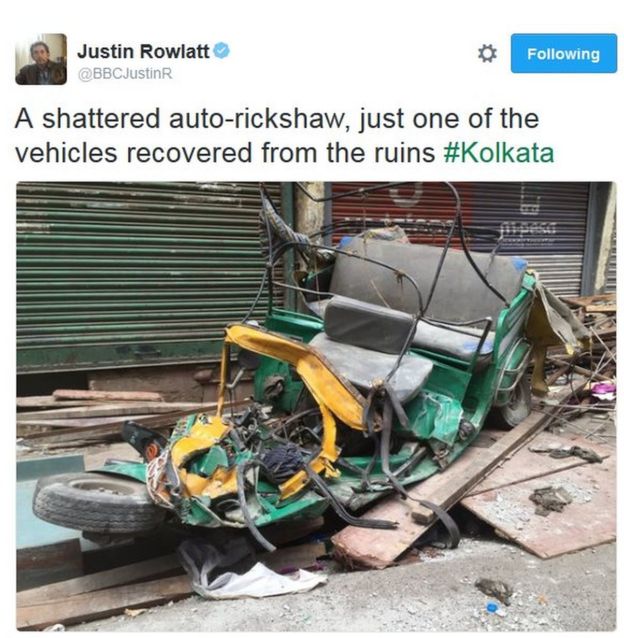
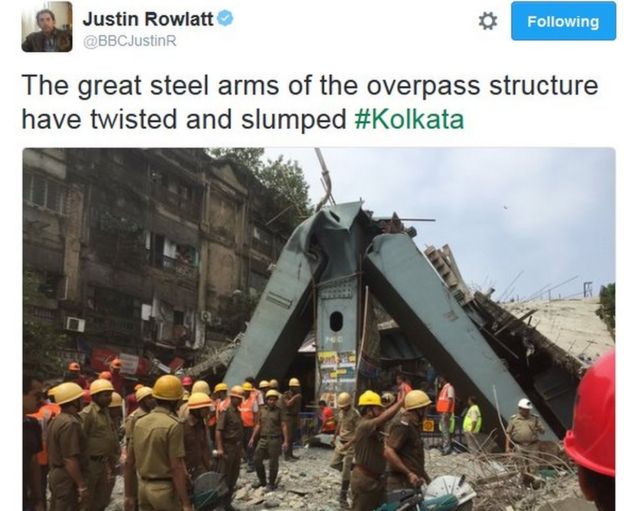
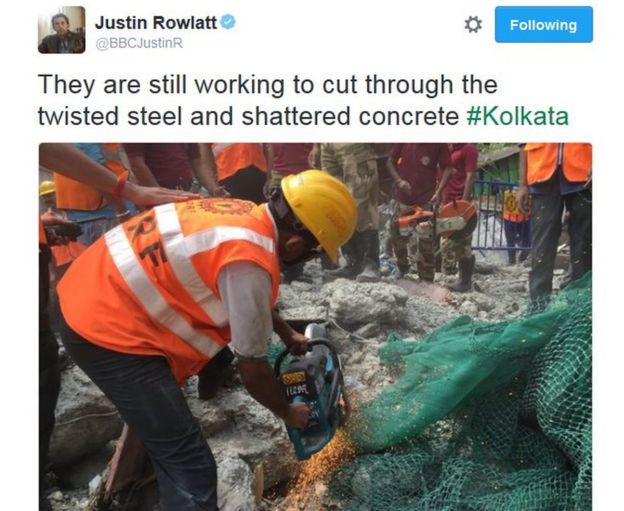
Rescue workers have struggled to get cranes and other machinery through the narrow and congested streets of Burrabazar area where the incident happened.
An injured construction worker said he had been working on the structure before it collapsed and added that he had seen bolts sticking out of the metal girders.
Safety issues
“We were cementing two iron girders for the pillars, but they couldn’t take the weight of the cement,” Milan Sheikh told the AFP news agency.
“The bolts started coming out this morning and then the flyover came crashing down.”
The cause of the disaster was not immediately clear, but safety issues such as lack of inspections and the use of substandard materials have plagued construction projects in India.
The company in charge of the construction, IVRCL, said it would co-operate with investigators. However one of its senior officials said in a news conference that the collapse had been “an act of god” as the company had a good safety record.
India’s collapsing building problem
The flyover was in one of Kolkata’s most densely populated neighbourhoods, with narrow lanes, and shops and houses built close together, making it difficult to get heavy equipment to the scene.
The BBC’s Rahul Tandon in Kolkata described chaotic scenes on Thursday night, with officials trying to clear the area in case the structure collapsed further.
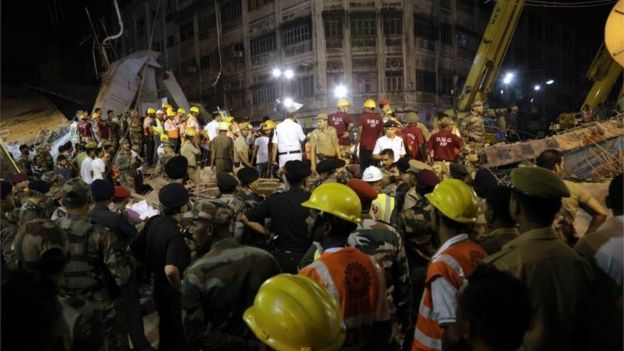
Hundreds of police, soldiers and disaster officials are at the scene
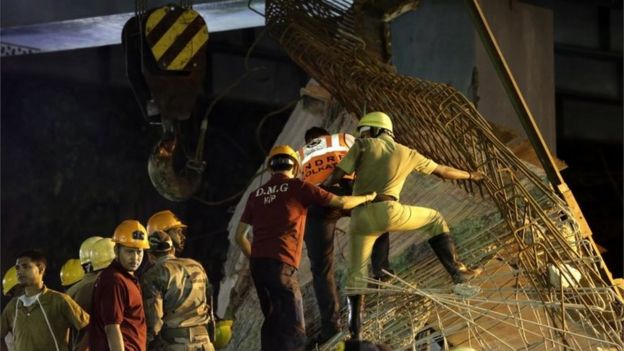
Mangled steel could be seen sticking out of the collapsed concrete
CCTV footage posted on social media appears to show the moment a 100-metre section of the structure collapses, hitting passers-by, auto rickshaws and nearby buildings.
Witnesses said other cars, buses and lorries were also hit. People are said to have been living in makeshift homes under the flyover.
Emergency teams are using sniffer dogs, concrete cutters, drilling machines and sensors to detect life, a rescue official told AFP news agency.
A spokesman for the National Disaster Management Authority (NDRF), Anurag Gupta, told AFP that soldiers and NDRF personnel were at the scene alongside hundreds of police and local officials.
The chief minister of West Bengal, Mamata Banerjee, has said the authorities will take “stringent action” against those responsible for the disaster.
A recurring tragedy

- August 2015: At least 11 people die after a building collapses near India’s western city of Mumbai
- July 2015: Five killed after a four-storey building collapses in Delhi
- April 2013: 74 people die after a high-rise residential building in Mumbai collapses
- June 2014: At least 10 people killed when a three-storey building in Delhi collapses
- June 2014: At least 60 people killed when a building collapses in a Chennai suburb
- November 2010: 69 killed and more than 80 injured in a collapse in Delhi
- September 2009: Chimney of a power plant in Chhattisgarh caves in, killing 40 people
BBC
 Q FM Africa's Modern Radio
Q FM Africa's Modern Radio